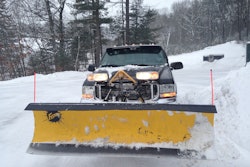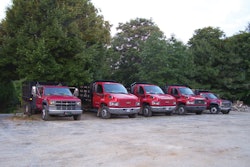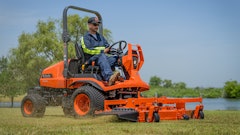As a fleet manager, you probably spend a significant portion of your time looking for ways to control your operating costs. Fuel is always a big portion of a fleet’s budget, so you may be considering strategies for reducing fuel expenses. There are many technologies, including telematics, that can reduce the total miles your fleet drives. Equipment that decreases unnecessary engine idle time might also be worth evaluating. Another big factor in the operating budget is direct vehicle maintenance costs. You may find yourself evaluating preventative maintenance policies, comparing the cost of in-house vs. outsourced maintenance, and shopping for the best buy on repair parts.
While all of these actions are worthwhile, and will probably generate some operational savings, many fleets have found that the most effective area to address in order to reduce long-term costs is vehicle acquisition. The impact of your new vehicle acquisition program can be seen in multiple areas:
- Initial acquisition costs
- Vehicle productivity
- Vehicle fuel efficiency
- Long-term maintenance costs
Acquisition Costs and Vehicle Productivity
Fleet acquisition (purchasing) costs include the actual costs of the vehicle and associated upfitting, as well as the overhead costs of funding the acquisition.
The first step in vehicle acquisition should involve evaluating exactly what you need the vehicle to do, and then ensuring that the design and specifications for the vehicle in question match your requirements. Adding extra or more complex components to a vehicle may increase its productivity, but there are tradeoffs. Not only will these add-ons increase the upfront cost of the unit, but they may also increase its overall weight, which could lead to less payload and more maintenance costs. The extra weight and potentially increased engine idle time necessary to operate the equipment could also negatively affect fuel economy.
This doesn’t mean that you should never consider add-ons. Before you add components, simply be sure to calculate their long-term benefits using a net present value (NPV) life-cycle cost analysis. An NPV analysis can be used to evaluate both upgraded truck chassis components and productivity add-ons. To make such an analysis, first identify your internal cost of money (more on that later) and then determine how soon the upgrades and/or additions need to return their costs (payback period). If you are a for-profit, tax-paying entity, you should also factor in your total effective income tax rate so that you can determine the impact of depreciation on the proposed upgrades. A vehicle investment will have a zero NPV at the end of the payback period if the payback equals your cost of money. If the return is less, the NPV will be negative; if it is earning more, the NPV will be positive.
One of the factors impacting an NPV analysis is the cost of money. Money can be obtained from multiple sources, including internal capital, direct borrowing (debt) and leasing. The question you must answer is, “Which is best for me?” Your answer will be impacted by the proposed life of the asset in question, your internal cost of money, alternative opportunity costs and the market cost of debt. Just because you have always financed your new vehicles using one particular option does not mean that you should continue to do so. Another factor for tax-paying entities is how the government treats capital investments for depreciation purposes.This is a constantly changing wildcard and should be re-evaluated every year.
Before buying, another question you should ask yourself is, “Do I really need that truck?” Just because a truck is currently in your fleet does not mean that it needs to be replaced. It may have been acquired initially to meet a requirement that no longer exists. Likewise, you may have multiple trucks that are performing the same basic task. Changes in demand for that task or increased productivity of the fleet through upgrades may have eliminated the need for some of the units. The process of evaluating the need for all of your vehicles, commonly referred to as fleet “right-sizing,” should be a part of every vehicle replacement cycle’s evaluation process. Do you have a specialty unit that is only used occasionally? If so, determine if that work can be subbed out to a rented unit for these occasional requirements at a lower cost. The elimination of non-productive vehicles in you fleet will reduce your investment costs, routine maintenance and licensing costs, and potentially even allow you to reduce your maintenance labor force.
Vehicle Fuel Efficiency
Fuel efficiency is dependent largely on how a vehicle was initially designed. That’s why you should start your new vehicle search by selecting a truck that is close in size and type to your desired end result. It is usually more cost-effective to pay for the right base, rather than to try to make an insufficient vehicle work by continually adding components.
Once you have selected the proper base vehicle, it is time to consider engine options. Just because you have always used a gas engine or a diesel engine in the past does not necessarily mean it is the correct choice going forward. Changes in technologies, job requirements and fuel costs can all impact your choice. This is especially true for trucks in the Class 3-5 range, where gasoline engines have improved and diesel engines have become more expensive as a result of post-2010 emissions requirements. Once you have settled on an engine type, then you can take the time to optimize the total powertrain (engine, transmission, axle gearing) to perform at maximum fuel efficiency.
There are numerous other factors you should consider that can impact the fuel efficiency of a vehicle. In many cases, your selections will be guided by the drive and duty cycles for the vehicle in question. For example, aerodynamic add-ons are highly beneficial when you have a drive cycle that includes extended driving at highway speeds and a duty cycle that includes frequent implementation of that drive cycle.
The proper selection of options can also reduce the weight of a vehicle. This weight reduction can be leveraged to allow you to improve fuel economy, increase payload (which can improve productivity), or even downsize the selected vehicle. In all cases, the net effect is a reduction in fuel consumption for each unit of work performed.
Other design/specification factors that can impact fuel economy include the use of low rolling resistance tires, high-efficiency transmissions, synthetic lubricants (especially in gear boxes), low-drag brake systems, and high-efficiency accessories such as air conditioning units, air compressors and alternators. Regardless of how you approach fuel efficiency, it is critical that you know your options. The better educated you are in terms of what the chassis OEMs are offering, the easier it will be for you to spec an optimum truck for your application.
Long-Term Maintenance Costs
The way you spec your next truck can have a huge impact on long-term maintenance costs. If a truck is not properly designed for the intended application and is overloaded in any way, your maintenance costs will increase. While this seems to be an obvious observation, avoiding overload can sometimes be tricky. When thinking about overloading, you need to go beyond traditional GVWR, GAWR and GCWR measurements and look at specific applications and how those applications impact individual chassis components. Start by identifying common high-maintenance components in relation to the individual truck’s drive and duty cycles.
For example:
A transmission that is typically loaded at or close to its maximum designed horsepower input rating will probably run hot, which in turn may mean a higher failure rate. Consider upgrading the transmission or adding auxiliary cooling units to reduce operating temperatures.
A low-output air brake compressor used in an inner city/urban application may have an excessively high run-time profile, which in turn can reduce the unit’s useful life. If an analysis of your maintenance issues shows a high failure rate in such an application, consider a larger compressor to shorten recharge cycles.
Trucks with high static load conditions, typical of utility trucks equipped with heavy mounted equipment, exhibit frequent spring failures simply because the springs are never allowed to relax. If some of your applications fall into this category, look into using spring packs rated at least one step higher than the associated axle and tire ratings.
It always helps to take the time to look at your current fleet’s maintenance history and identify any high-failure components and systems. More than likely, these high failure rates will be associated with some form of component overloading, whether in terms of actual load imposed by the truck’s application or from an excessively high utilization rate. Identifying and correcting these issues can reduce your maintenance costs. In addition, some corrective components can be retrofitted to existing trucks to save you even more money.
Want to Learn More?
The more information you have on spec’ing your trucks and identifying and evaluating your options, the easier it will be for you to reduce your fleet’s overall operating costs. One of the best places you can go to enhance your knowledge is The Work Truck Show, produced annually by the NTEA. The Work Truck Show 2015 will be held in Indianapolis, IN, March 4-6. Educational programming, including the Green Truck Summit, starts March 3. In addition to seeing more than 500 vocational truck exhibitors on the trade show floor and meeting with technical experts from a wide range of companies, attendees will have to opportunity to register for fleet-specific sessions on topics including:
- Fleet Management 101: Fundamentals of Truck Fleet Management (requires separate registration)
- Mitigating Risk through Proper Truck Certification
- Keys to Developing a Proper Truck Chassis Spec’
- Lease or Capital Purchase — Identifying the Best Option for Fleets
- Strategies and Techniques for Rightsizing Your Fleet
- Utilizing Life-Cycle Cost Analysis as a Selling or Purchasing Strategy
- Fleet Performance Measurement and Benchmarking
Throughout the Show, there will be 15 chassis update sessions presented by the industry’s leading chassis manufacturers. The concurrent Green Truck Summit will feature sessions on drive and duty cycle analysis, telematics, sustainable technology implementation, and numerous other topics that can help fleet managers reduce their operating costs.
To register or learn more, visit WorkTruckShow.com or call 1-800-441-6832.
Article supplied by Robert "Bob" Johnson of the NTEA, The Association for the Work Truck Industry



















![U8kj71gt 720[1]](https://img.greenindustrypros.com/mindful/acbm/workspaces/default/uploads/2025/10/u8kj71gt-7201.8OyDyc124u.jpg?ar=16%3A9&auto=format%2Ccompress&fit=crop&h=135&q=70&w=240)
